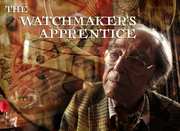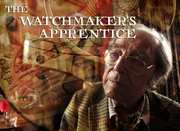Review for The Watchmaker's Apprentice
Despite the title, the centrepiece of David Armstrong’s The Watchmakers Apprentice is 85 year old George Daniels and not his younger protégée, Roger Smith. Daniels is considered to be one of the greatest watchmakers who ever lived. His coaxial escarpment, which removed the need for lubricant, was a major breakthrough in horology. His exquisite, completely hand made watches for Omega will run you a few hundred thousand to over a million GBP at Sotheby's. A lively interview with Daniels, whose “I’m too old to care” delivery bears some resemblance to Robert S. McNamara in Errol Morris’s Fog of War, is the beating heart of the film. Daniels is charming, cocky and keenly aware that his time is running out.
It’s when The Watchmaker’s Apprentice strays from Daniels that it runs into problems. For starters, the film dances around the obsession required to be a watchmaker but never gets beyond telling us that it takes a lot of time and commitment. We learn that both men are driven, but by what? The low practicality of perfecting a mechanism? A romantic desire to keep a craft alive? Or, as Daniels himself muses at one point, “pure egocentricity”?
Then there’s the problem of craft. One subject claims that “the hand of the artist should never be seen”, an observation that stands in stark contrast to the film’s muddled aesthetics. Too many times we feel the filmmakers trying to fill gaps with a flowery voice over by John Rys-Davies, shaky handheld shots, awkward transitions, or poor musical choices. For instance, presumably to help cement the film as a meditation on time in the least subtle way, a cover of Jim Croce’s Time in a Bottle is used completely un-ironically. Twice. For instructions on how to use the song correctly, please see the Quick Silver sequence in X Men Days of Future Past.
Nor is the relationship between the two men presented in a particularly interesting way. Surely Smith’s journey from apprentice to master was more compelling than the story told here. Smith working hard for years to gain Daniels’s favour holds promise, but the fundamental question “why bother?” is never fully addressed. We learn that Daniels and Smith worked together, respected each other, perhaps grudgingly, and that Daniels, touchingly, left everything to Smith when he died. But beyond these broad points, we’re left knowing very little about their dynamic. An interview with Smith’s real father is meant to give some kind of counterpoint but ultimately only reveals that Smith spent a lot of time in his room as a child.
Part of the issue here is that the two men never share screen time other than in some short clips lifted from another documentary. Sadly, time did run out on Daniels who died shortly after his interview was filmed. Although Armstrong tries to keep this fact under wraps so that he can use it as a big reveal later in the film, it doesn’t take long for most of us to realise that the other interview subjects, including Smith, were filmed after Daniels’ death. It’s all a bit cumbersome and we’re left to wonder what the film would have been if Daniels hadn’t died.



























Your Opinions and Comments
Be the first to post a comment!